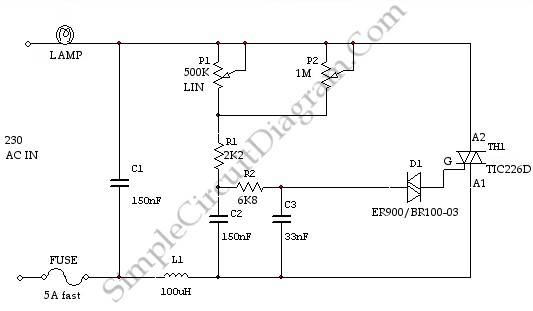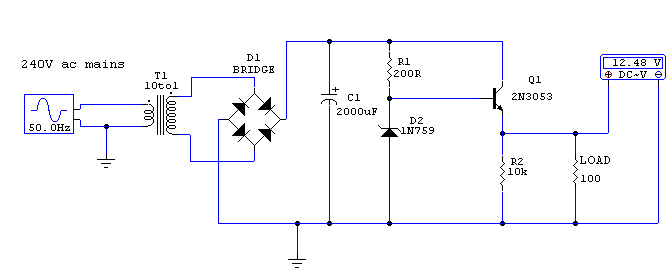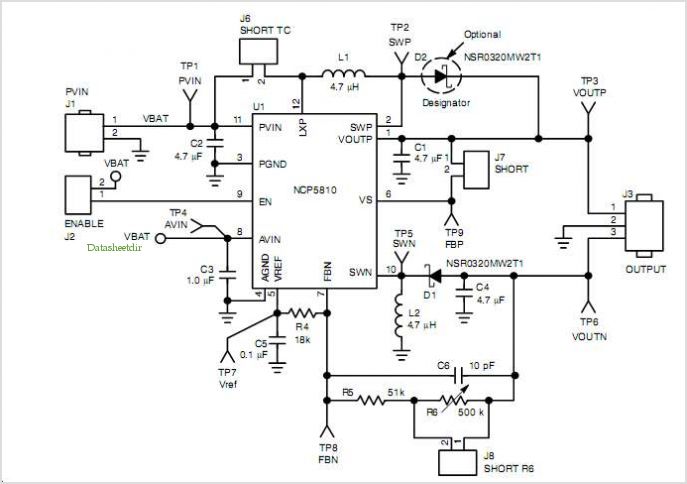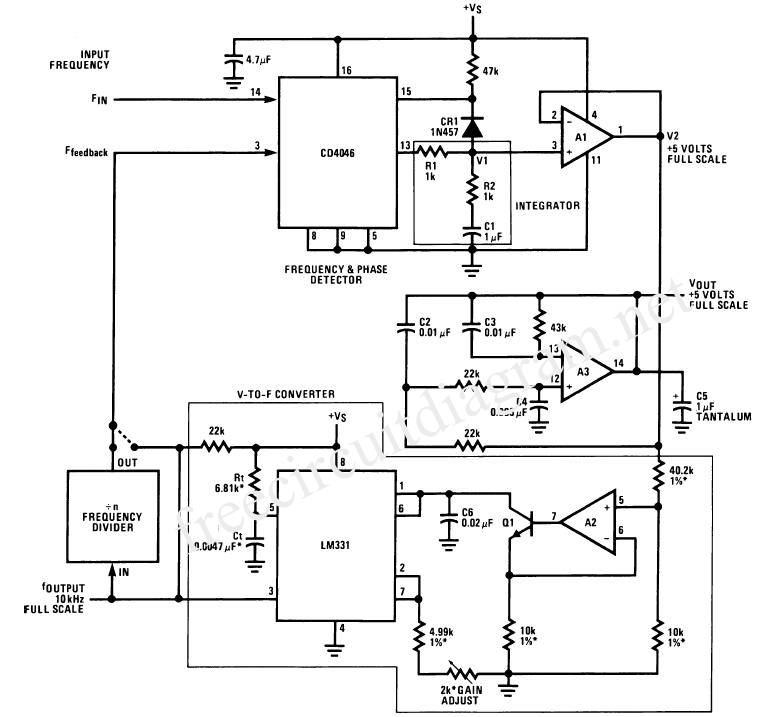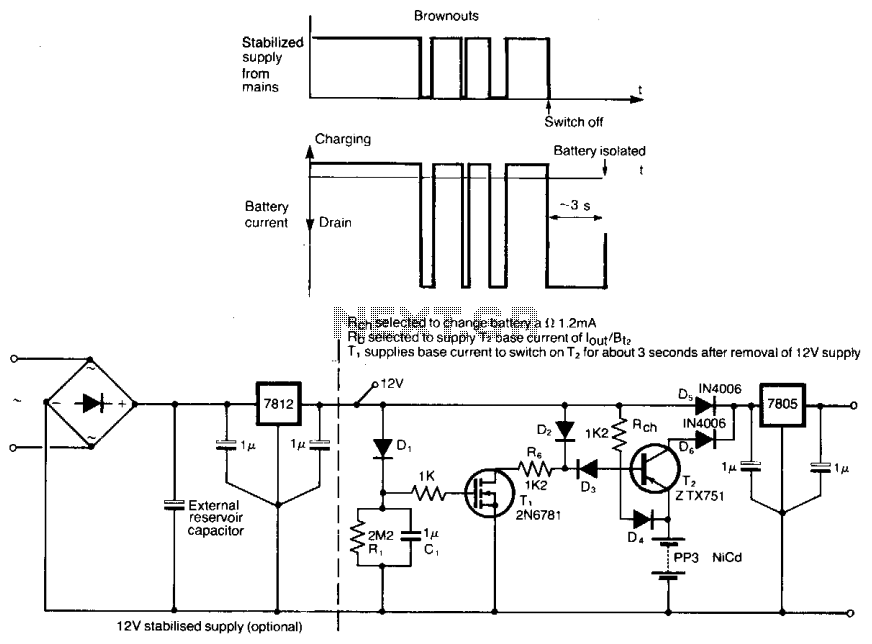
2N3055 and LM723 3-30 V/2.5 A Stabilized power supply

This project is a versatile power supply designed for use in electronics, capable of addressing various supply issues encountered in typical electronics workshops. It offers a continuously variable output voltage range from 3 V to 30 V, with a maximum output current of 2.5 A, sufficient for most applications. The circuit is fully stabilized across its output range and is equipped with protection against short circuits and overloads. The power supply utilizes the well-known voltage stabilizer IC, LM723, which can be adjusted to output voltages between 2 V and 37 V DC. However, the IC's current rating of 150 mA is inadequate for significant applications. To enhance current capacity, the output of the IC drives a Darlington pair consisting of two power transistors: BD135 and 2N3055. This configuration limits the output voltage range to 3 V to 30 V DC. A series resistor, R5, is included at the output to protect the circuit from overloading. If excessive current flows through R5, the voltage across it rises, and any voltage exceeding 0.3 V will trigger the circuit to cut off, thus safeguarding it from overloads. This protection feature is integrated into the LM723, which senses the voltage drop across R5 between pins 2 and 3. Simultaneously, the IC continuously compares the output voltage to its internal reference, and if the difference exceeds designed thresholds, it automatically corrects the output, ensuring stability under varying loads. A potentiometer, P1, allows for the adjustment of the output voltage to the desired level. For the full voltage range of 3 V to 30 V, a mains transformer with a secondary winding rated at least 24 V/3 A is recommended. Alternatively, a transformer with a lower secondary voltage can be used if the maximum output voltage is not required; however, the rectified voltage across capacitor C2 should exceed the maximum expected output by 4-5 volts.
The circuit design incorporates several critical components that contribute to its functionality and reliability. The LM723 voltage regulator serves as the heart of the power supply, providing a stable output voltage that can be finely tuned. The Darlington pair configuration, consisting of BD135 and 2N3055 transistors, allows for significant current amplification, enabling the circuit to handle higher loads while maintaining the desired output voltage range.
Resistor R5 plays a vital role in the protection mechanism of the power supply. By monitoring the current flowing through the circuit, it ensures that if the current exceeds safe limits, the circuit is automatically disabled, preventing damage to both the power supply and connected loads. This self-protective feature is crucial in maintaining the longevity and safety of the power supply in various operational conditions.
The potentiometer P1 is an essential user interface element, enabling operators to set the output voltage according to specific requirements. This adjustability makes the power supply suitable for a wide range of applications, from powering small electronic devices to testing and prototyping in more complex circuits.
The transformer selection is also a key consideration; using a transformer with the appropriate secondary voltage rating ensures that the circuit can achieve its full potential. The requirement for the rectified voltage to exceed the maximum output by 4-5 volts is necessary to account for voltage drops across the rectifying diodes and any filtering capacitors, ensuring that the output remains stable under load.
Overall, this versatile power supply circuit is an invaluable tool for electronics professionals, providing a reliable and adjustable source of power for various applications. Its thoughtful design, incorporating protection features and user-friendly adjustments, makes it a practical solution for everyday needs in electronics workshops.This is a very useful project for anyone working in electronics. It is a versatile power supply that will solve most of the supply problems arising in the everyday work of any electronics work shop. It covers a wide range of voltages being continuously variable from 30 V down to 3 V. The output current is 2. 5 A maximum, more than enough for most a pplications. The circuit is completely stabilised even at the extremes of its output range and is fully protected against short-circuits and overloading. The power supply is using a well known and quite popular VOLTAGE STABILIZER IC the LM 723. The IC can be adjusted for out put voltages that vary continuously between 2 and 37 VDC and has a current rating of 150 mA which is of course too low for any serious use.
In order to increase the current handling capacity of the circuit the output of the IC is used to drive a darlington pair formed by two power transistors the BD 135 and the 2N3055. The use of the transistors to increase the maximum current output limits the range of output voltages somewhat and this is why the circuit has been designed to operate from 3 to 30 VDC.
The resistor R5 that you see connected in series with the output of the supply is used for the protection of the circuit from overloading. If an excessively large current flows through R5, the voltage across it increases and any voltage greater than 0.
3 V across it has as a result to cut the supply off, thus effectively protecting it from overloads. This protection feature is built in the LM 723 and the voltage drop across R5 is sensed by the IC itself between pins 2 and 3. At the same time the IC is continuously comparing the output voltage to its internal reference and if the difference exceeds the designerG ‚¬ s standards it corrects it automatically.
This ensures great stability under different loads. The potentiometer P1 is used to adjust the out put voltage at the desired level. If the full range from 3 to 30 V is desired then you should use a mains transformer with a secondary winding having a rating of at least 24 V/3 A. If the maxi mum voltage output is not desired you can of course use a transformer with a lower secondary voltage output.
(However, once rectified the voltage across the capacitor C2 should exceed by 4-5 volts the maximum output expected from the circuit. 🔗 External reference
The circuit design incorporates several critical components that contribute to its functionality and reliability. The LM723 voltage regulator serves as the heart of the power supply, providing a stable output voltage that can be finely tuned. The Darlington pair configuration, consisting of BD135 and 2N3055 transistors, allows for significant current amplification, enabling the circuit to handle higher loads while maintaining the desired output voltage range.
Resistor R5 plays a vital role in the protection mechanism of the power supply. By monitoring the current flowing through the circuit, it ensures that if the current exceeds safe limits, the circuit is automatically disabled, preventing damage to both the power supply and connected loads. This self-protective feature is crucial in maintaining the longevity and safety of the power supply in various operational conditions.
The potentiometer P1 is an essential user interface element, enabling operators to set the output voltage according to specific requirements. This adjustability makes the power supply suitable for a wide range of applications, from powering small electronic devices to testing and prototyping in more complex circuits.
The transformer selection is also a key consideration; using a transformer with the appropriate secondary voltage rating ensures that the circuit can achieve its full potential. The requirement for the rectified voltage to exceed the maximum output by 4-5 volts is necessary to account for voltage drops across the rectifying diodes and any filtering capacitors, ensuring that the output remains stable under load.
Overall, this versatile power supply circuit is an invaluable tool for electronics professionals, providing a reliable and adjustable source of power for various applications. Its thoughtful design, incorporating protection features and user-friendly adjustments, makes it a practical solution for everyday needs in electronics workshops.This is a very useful project for anyone working in electronics. It is a versatile power supply that will solve most of the supply problems arising in the everyday work of any electronics work shop. It covers a wide range of voltages being continuously variable from 30 V down to 3 V. The output current is 2. 5 A maximum, more than enough for most a pplications. The circuit is completely stabilised even at the extremes of its output range and is fully protected against short-circuits and overloading. The power supply is using a well known and quite popular VOLTAGE STABILIZER IC the LM 723. The IC can be adjusted for out put voltages that vary continuously between 2 and 37 VDC and has a current rating of 150 mA which is of course too low for any serious use.
In order to increase the current handling capacity of the circuit the output of the IC is used to drive a darlington pair formed by two power transistors the BD 135 and the 2N3055. The use of the transistors to increase the maximum current output limits the range of output voltages somewhat and this is why the circuit has been designed to operate from 3 to 30 VDC.
The resistor R5 that you see connected in series with the output of the supply is used for the protection of the circuit from overloading. If an excessively large current flows through R5, the voltage across it increases and any voltage greater than 0.
3 V across it has as a result to cut the supply off, thus effectively protecting it from overloads. This protection feature is built in the LM 723 and the voltage drop across R5 is sensed by the IC itself between pins 2 and 3. At the same time the IC is continuously comparing the output voltage to its internal reference and if the difference exceeds the designerG ‚¬ s standards it corrects it automatically.
This ensures great stability under different loads. The potentiometer P1 is used to adjust the out put voltage at the desired level. If the full range from 3 to 30 V is desired then you should use a mains transformer with a secondary winding having a rating of at least 24 V/3 A. If the maxi mum voltage output is not desired you can of course use a transformer with a lower secondary voltage output.
(However, once rectified the voltage across the capacitor C2 should exceed by 4-5 volts the maximum output expected from the circuit. 🔗 External reference
